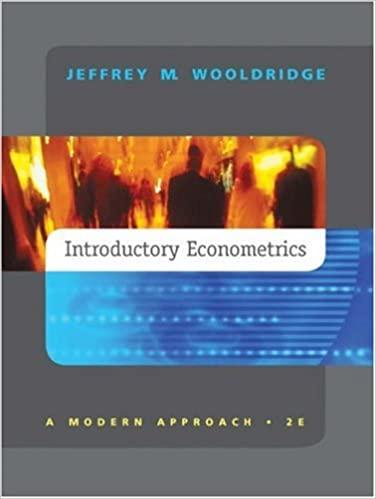Question
The next summer, you are invited by the government of a small state in one of the large South American nations to help in designing
The next summer, you are invited by the government of a small state in one of the large South American nations to help in designing a tax reform. Eager for some Andean skiing, you accept. Upon arrival, you discover that the economy consists of two types of individuals, with each accounting for half of the population. Jello is the numeraire consumption good in the economy. The first type of individual has a wage of 1 jello packet per unit of labor supplied, and the second has a wage of 2 jello packets per unit of labor. Individuals of each type have an endowment of one unit of labor. Each individual also has a lump sum income of one packet of jello.
Individuals of both
types have preferences over three goods: leisure (1-L), jello (J), and coconuts
(C). These preferences are described by a utility function: U = log J + log C +
log (1-L).
There is a domestic
production technology that turns one package of jello into one unit of a
general consumption good. The process can be reversed.
The current tax system is as
follows. Taxable income, which is measured in units of jello, is defined as
labor earnings plus lump sum income. The marginal tax rate on the first 1.5
jellos of income is 25 percent, while the marginal tax rate is 50 percent on
all income above this level.
(a) You begin your
analysis of the tax system by trying to determine the optimal labor supply
behavior of the two types of individuals in this economy. Find the labor
supply, consumption of jello, and consumption of coconuts for individuals with
a wage of 1, and for those with a wage of 2.
(b) What is per capita tax
revenue from the current tax code?
(c) The domestic retail
lobby has proposed a tax deduction for purchases of the general consumption
good. If all expenditures on this good were excluded from taxable income,
describe the new tax schedule. How would per capita revenue change if this
policy were adopted? Explain the factors that contribute to any revenue change
that you identify.
(d) The retail lobby
has evaluated the potential revenue cost of the proposal in (c) by multiplying
outlays on the general consumption good under the current (no deduction) tax
system by estimates of marginal tax rates for consumers of types 1 and 2.
Consider an individual with preferences over consumption in two periods given by: V(C1, C2) = log C1 + [1/(1+?)] log C2. This individual faces a wage income tax, so that the interest rate at which she can borrow and lend is simply r. Assume that her wage income in periods 1 and 2 is fixed at Y1 and Y2, and that her labor income tax rate in period 1 is t1 while that in period 2 is t2. Assume that t1 > t2, and that both taxes are linear. Further assume that the individual has access to a "tax avoidance technology" that permits wage income to be shifted from period 1 to period 2. If the individual chooses to shift A dollars from period 1 to period 2, where A is between 0 and Y1, her taxable income in period 1 will be Y1 - A and that in period 2 will be Y2 + A. Using the tax avoidance technology is costly; the cost of shifting A dollars is b(A). This cost can be viewed as the legal and administrative fees associated with tax avoidance, and it must be paid in period 1. (a) Find the lifetime budget constraint for this individual, recognizing both the impact of tax avoidance on income net of taxes, and the cost of tax avoidance. (b) Now obtain first order conditions for the optimal choice of A. Does the optimal level of A depend on the utility function? Explain why or why not. (c) Consider the case in which b(A) = gA 2 , and assume that r = 0. Obtain a formula for A as a function of the tax rates in the two periods, and compute the elasticity of tax avoidance (A) with respect to (1-t1). Briefly describe the implications for the impact of tax changes on revenue

Step by Step Solution
There are 3 Steps involved in it
Step: 1

Get Instant Access to Expert-Tailored Solutions
See step-by-step solutions with expert insights and AI powered tools for academic success
Step: 2

Step: 3

Ace Your Homework with AI
Get the answers you need in no time with our AI-driven, step-by-step assistance
Get Started


